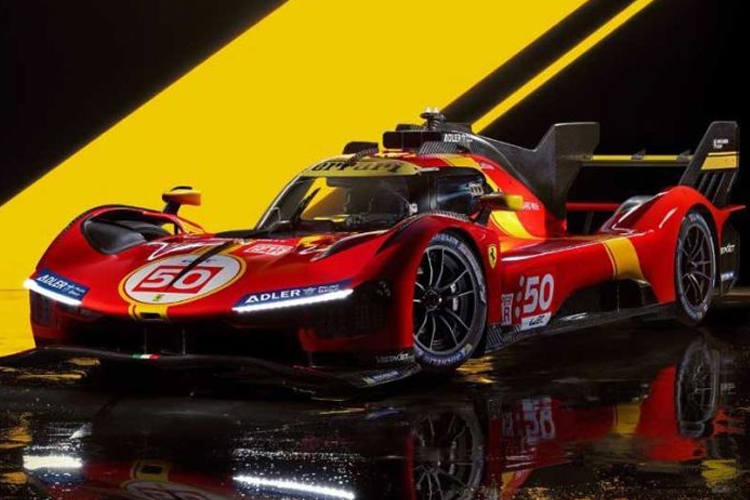Ferrari, a name known to all, carries a rich history that has captivated enthusiasts throughout the years. Founded in 1947 by Enzo Ferrari, this automotive company has evolved from a local Italian brand to a global icon under his strong and determined leadership. However, the history of Ferrari goes beyond mere accomplishments. According to Tefi Alonso, an analyst from Strategy Factory, Ferrari’s growth stems from its commitment to innovation fostered through intense competition.
This commitment was evident in June 2023 when Ferrari achieved a remarkable victory in the prestigious 24-hour car endurance race, Le Mans 24 Hours. Surpassing Toyota, the dominant force in endurance racing, Ferrari’s triumph marked a significant milestone, 58 years after their last victory in the same event. The outcome exceeded the expectations of many, considering the profound changes in automotive technology over the years.
“Ferrari is a company deeply ingrained with the culture of winning. Their relentless pursuit of victory encourages employees to view competition not as an obstacle but as an opportunity for innovation and setting trends,” wrote Tefi Alonso.
Enzo Ferrari, the company’s founder, instilled the spirit of competition and innovation within the organization. His unwavering determination ensured that every car produced by Ferrari aimed to be a winner. This indomitable spirit is vividly portrayed in the film “Ford v Ferrari,” portrayed by Matt Damon and Christian Bale.
Also Read: Introducing the Largest Truck Worldwide, with a Remarkable 500-Ton Payload Capacity
Enzo Ferrari’s unyielding and fiercely competitive nature became a defining characteristic of the brand. This spirit of competition was evident from the very beginning when Enzo Ferrari created an iconic car, the Ferrari 125 S. Designed after World War II, the Ferrari 125 S boasted a two-cylinder, 1500 cc engine. Franco Cortese drove this car to victory in its inaugural race at the Piacenza Circuit on May 11, 1947. Just two weeks later, Franco Cortese secured another triumph at the Rome Grand Prix held at the Terme di Caracalla circuit. By 1950, the name Ferrari had become renowned worldwide.
Ferrari’s success extended to endurance racing, as they clinched their first Mille Miglia victory in 1948 and triumphed in the 24 Hours of Le Mans in 1949. In Formula 1, Ferrari claimed their initial Formula 1 World Championship Grand Prix win in 1951, followed by securing the World title with Alberto Ascari in 1952 and 1953.
In 1951, Ferrari initiated a collaboration with Carrozzeria Scaglietti, entrusting them with the manufacture and assembly of their chassis. Sales figures skyrocketed between 1950 and 1960, and Ferrari recognized the need for a modern and integrated corporate structure to support their growing business.
As a result, Enzo Ferrari implemented a series of transformative changes. In 1960, Ferrari became a limited liability company and, in 1969, entered into an agreement with Fiat, selling 50% of its shares to the company.
In 1973, Ferrari introduced their first commercially successful car powered by a rear-mounted V8 engine. Sales continued to surge throughout the 1960s and 1970s, driven by the popularity of models such as the Ferrari 308 GTB, Ferrari 308 GT4, and Ferrari GTS.
Tragedy struck in 1980 when Enzo Ferrari passed away. Subsequently, Fiat increased its stake to 90%, with the remaining 10% held by Enzo’s son, Piero Ferrari.
Entering the new millennium, Ferrari experienced a resurgence of success. During this period, they achieved impressive victories on American soil, including three 12 Hours of Sebring and one 24 Hours of Daytona.
In Formula 1, the Scuderia claimed an astonishing 13 world titles between 2000 and 2008. From a commercial standpoint, this era also witnessed the launch of highly successful cars like the Enzo Ferrari in 2002 and the F430 in 2004.
The spirit of competition permeates Ferrari’s production cars as well, as they strive to ensure that the vehicles they create possess the same resilience as their racing counterparts.
Simultaneously, Ferrari remains selective in their sales approach, opting not to make their cars readily available to everyone. Limited production numbers, striking aesthetics, and exceptional performance have propelled Ferrari to become the world’s most valuable automotive brand, according to the Brand Finance Global 500.
“When Ferrari debuted on the New York Stock Exchange in 2015, its market value stood at USD 10 billion. Presently, it has reached an impressive USD 30 billion (Rp. 443.3 trillion),” stated Tefi Alonso.
